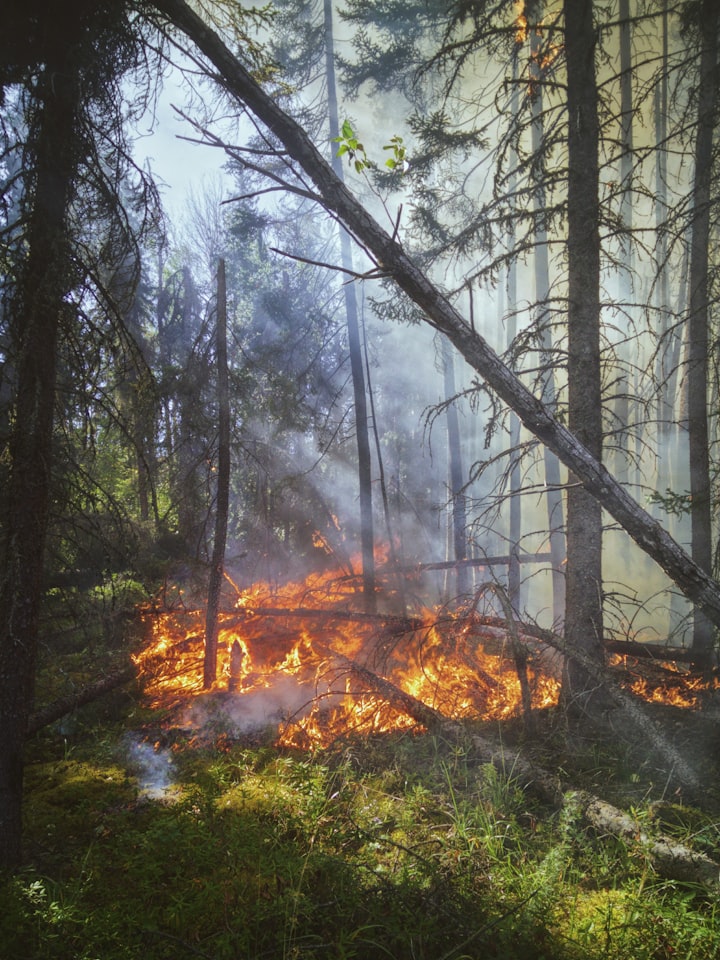What if an asteroid collided with earth?
What would happen to all of mankind? Here's what NASA is doing.

What would happen if an asteroid were on a collision course with Earth?
Detection and Tracking: Scientists track the orbits of asteroids in space, and if one is identified to be on a collision course with Earth, efforts would be made to predict its path and estimate the potential impact location.
Entry into Atmosphere: As the asteroid enters Earth's atmosphere, friction with the air would cause it to heat up and create a bright fireball known as a meteor or "shooting star." This process is similar to what you've mentioned about smaller space rocks burning up upon entry.
Airburst or Impact: Depending on the asteroid's size, composition, speed, and angle of entry, it could either disintegrate in the atmosphere due to intense heat and pressure (an airburst) or impact the Earth's surface.
Energy Release: If the asteroid impacts, it would release an immense amount of energy, equivalent to multiple nuclear bombs detonating simultaneously. This would result in a powerful explosion, creating a shockwave that could cause damage over a significant area.
Crater Formation: An impacting asteroid would create a crater at the impact site. The size of the crater would vary based on the asteroid's size and speed. Larger asteroids could create craters several kilometers wide.
Immediate Effects:
The impact would lead to massive destruction at the impact site and in its immediate vicinity.
The energy release could cause earthquakes and trigger tsunamis if the impact occurs in an ocean.
Atmospheric Effects:
Debris and dust ejected into the atmosphere during an impact could block sunlight. This would lead to a period of darkness, decreased temperatures, and disrupted weather patterns.
This "nuclear winter" effect could impact global ecosystems, cause crop failures, and contribute to long-lasting environmental changes.
Long-Term Consequences:
Depending on the size of the asteroid, the long-term consequences could range from localized destruction to global ecological disruptions.
Extremely large impacts could lead to mass extinctions, altering the course of evolution and Earth's ecosystems.
Response and Mitigation:
Efforts are underway to develop strategies to mitigate potential impact threats, such as diverting an asteroid's path or preparing evacuation plans.
International collaborations focus on early detection and response to minimize the potential damage from such events.
Main Asteroid Belt:
The main asteroid belt is located between Mars and Jupiter and contains various asteroids of different sizes, some of which can be quite large, up to 583 miles long.
While the chances of an asteroid from the main belt diverting towards Earth are relatively low, the potential consequences of a large asteroid impact would be severe.
Diverting Asteroids:
The idea of an asteroid diverting towards Earth from the main belt highlights the possibility of significant impacts that could pose a threat to our planet.
The impact of a large asteroid could indeed cause serious consequences, including widespread damage and global effects.
Frequent Encounters: Small space rocks frequently enter Earth's atmosphere, but they usually burn up upon entry due to their size. Larger objects burn up as well or create fireballs, usually with no significant impact.
Historical Impact Events: Evidence suggests that Earth has experienced significant asteroid impacts in the past. While most small impacts are harmless, larger impacts could have global consequences.
NASA's Preparedness: NASA conducts tests and simulations to assess Earth's preparedness for potential asteroid collisions. The agency collaborates with international space agencies to simulate impact scenarios and study the potential impact's effects and ways to mitigate the damage.
Asteroid Size and Impact: The size of the asteroid determines the impact. Objects smaller than 82 feet across typically burn up and cause minor damage. Those up to half a mile could cause significant localized damage, while larger objects could have worldwide consequences.
Known Asteroids: Some large asteroids are known, but they're not currently on a collision course with Earth. Objects like Toutatis and Apophis have been observed closely.
Preparation Strategies: Strategies to prepare for potential impact include monitoring, early warning systems, diverting the asteroid's path, and creating safe zones to protect people from impact effects.
Societal Impact: Planning also involves considering the societal impact of such an event. Governments would need to handle public reaction and coordinate law enforcement and emergency services.
Release of Information: Deciding when to release information about a potential impact is crucial. Balancing the risk of panic with the need for preparedness is a challenge.
Importance of Preparedness: While asteroid collisions are relatively rare, the potential consequences make preparedness efforts important. Such projects help emergency planners understand their options and develop strategies for response.
Future Concerns: While we may not be at the level depicted in movies like "Armageddon" or "Deep Impact," the possibility of a significant asteroid impact remains a concern. Being prepared for various scenarios is essential.
It's worth noting that ongoing scientific research and collaboration among space agencies aim to enhance our understanding of potential impact events and develop strategies to mitigate the damage they could cause.





Comments
There are no comments for this story
Be the first to respond and start the conversation.